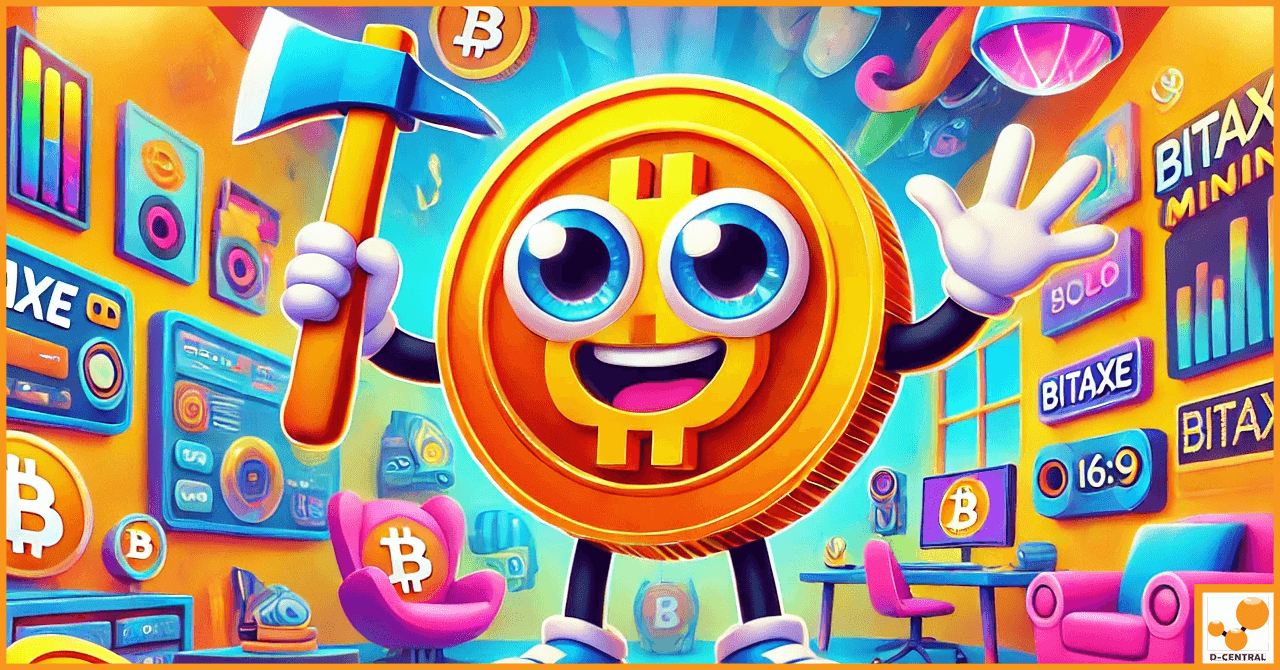
The Comprehensive Bitcoin Guide to BIP-119 and CheckTemplateVerify (CTV)
Bitcoin, the pioneer of decentralized digital currencies, has come a long way since its inception in 2009. Over the years,
4479 Desserte Nord Autoroute 440, Laval, QC H7P 6E2

In the tapestry of modern society, money serves as the fundamental thread weaving through the fabric of daily life, commerce, and global economies. It is the medium that facilitates trade, denotes value, and acts as a store of wealth, shaping the contours of social and economic interactions across the globe. Yet, the money that circulates in our pockets and digital accounts, with its crisp banknotes, gleaming coins, and electronic digits, is the culmination of a long and complex evolutionary journey.
The concept of money, intriguingly, finds its roots in the realm of collectibles – objects valued not just for their utility but for their rarity, beauty, and symbolic significance. From shells strewn along ancient shorelines to metallic coins stamped with the visages of emperors, these collectibles have traversed a transformative path, morphing into the currency we recognize today. This evolution is not merely a tale of economic innovation but a mirror reflecting the intricate dance between societal progress and the mechanisms of trade and exchange.
Exploring the transformation from primitive bartering systems, where goods were directly exchanged in a dance of mutual need, to the sophisticated monetary systems that underpin modern economies, reveals more than the advent of a convenient trading tool. It unveils the intricate relationship between societal development and economic exchange, highlighting how the evolution of money is inextricably linked to the march of civilization itself. As we delve into this journey, we uncover not just the history of currency but the story of human society and its unending quest for efficiency, trust, and collective prosperity.
Definition and Examples of Barter Systems in Ancient Societies: Barter systems represent the earliest form of economic exchange, predating the invention of money by millennia. In its essence, bartering involves the direct exchange of goods and services between parties without the use of a standardized medium of exchange. Ancient societies relied heavily on this system for trade, with examples spanning across continents. The Mesopotamian civilizations traded barley for other necessities, while Indigenous tribes in the Americas exchanged goods like maize, pelts, and tobacco. In Africa, communities traded salt, gold, and ivory, showcasing the diversity of goods exchanged through bartering.
Limitations and Inefficiencies of Barter Systems: Despite its widespread use, the barter system came with significant limitations that hindered economic expansion. The primary challenge was the “double coincidence of wants,” requiring both parties to desire what the other offered. This often led to time-consuming negotiations and made large-scale or complex trades difficult. Additionally, the lack of standardization in value and the perishability of some goods further complicated exchanges, limiting trade efficiency and the ability to store wealth.
Introduction to Collectibles as a Precursor to Money: As societies evolved, the limitations of barter systems paved the way for the use of collectibles as an intermediary in trade. Collectibles, ranging from shells and beads to livestock, served as early forms of money due to their perceived value, durability, and portability. For instance, cowrie shells were widely used in Africa, Asia, and the Pacific Islands, while Native American tribes used wampum, a form of currency made from shell beads. Livestock, including cattle and camels, played a similar role in many pastoral societies, embodying wealth and facilitating exchanges.
Cultural and Social Significance of Collectibles in Ancient Civilizations: Collectibles held profound cultural and social significance beyond their economic utility. They were often imbued with symbolic meanings, representing status, social ties, and religious beliefs. For example, in many cultures, the possession of certain collectibles signified wealth and social standing, playing a crucial role in marriage negotiations, inheritance, and ceremonial exchanges. The use of cowrie shells in divination and as burial offerings in some African and Asian societies illustrates the deep cultural resonance of these early monetary forms. This intertwining of economic utility and cultural significance laid the groundwork for the complex monetary systems that would eventually emerge, highlighting the inseparable link between economic practices and societal values.
Durability, Divisibility, Transportability, and Recognizability: For collectibles to evolve into widely accepted forms of currency, they had to meet several key criteria. Durability ensured that these items could withstand frequent handling and long-term storage without significant degradation. Divisibility allowed for the representation of different values, facilitating transactions of varying sizes. Transportability was crucial for trade over distances, requiring the currency to be easily moved. Recognizability ensured that the items were easily identifiable and difficult to counterfeit, fostering trust in their value.
How Early Collectibles Met These Criteria: Many early collectibles naturally possessed some of these characteristics. For instance, cowrie shells were durable and recognizable, with their unique appearance making them difficult to counterfeit. Livestock, while not easily divisible, were durable and had intrinsic value, serving multiple purposes beyond currency. Beads and other small items made from precious materials were both transportable and divisible, allowing for their use in a range of transactions. The gradual selection of collectibles that best met these criteria marked the beginning of their transition into more formalized forms of currency.
Case Studies:
Transition Factors:
The evolution from collectibles to recognized currency was a multifaceted process, influenced by economic, social, and technological factors. This transition laid the foundation for the complex monetary systems that underpin modern economies, illustrating the adaptive nature of human societies in response to changing economic landscapes.
The Shift from Organic to Metal Collectibles: The transition from organic collectibles such as shells, beads, and livestock to metal forms of money marked a significant evolution in the history of currency. Metals like bronze, silver, and gold began to be used as money due to their inherent properties. This shift was driven by the limitations of organic collectibles, including their perishability, variability, and the challenges associated with their transport over long distances.
Advantages of Metal Money over Traditional Collectibles: Metal money offered several key advantages that facilitated its adoption and widespread use. Metals are durable, capable of withstanding wear and tear over time without losing their intrinsic value. They are also divisible, allowing for the creation of units of varying sizes to facilitate different transaction values. Metal’s malleability meant it could be shaped and stamped, aiding in standardization and recognizability. Additionally, metals, particularly precious metals like gold and silver, have intrinsic value due to their rarity and desirability, which helped to establish and maintain trust in their worth as a medium of exchange.
The Inception of Coinage in Lydia: The innovation of coinage is often credited to the Kingdom of Lydia in the 7th century BCE, where the first known coins were minted from electrum, a natural alloy of gold and silver. These early coins were stamped with official symbols, marking the authority’s guarantee of their weight and purity. This development represented a significant leap forward in the standardization and ease of use of metal money.
The Spread of Coinage to Greece, Persia, and Beyond: The concept of coinage quickly spread from Lydia to neighbouring regions, including Greece, Persia, and the broader Mediterranean world. The Greeks refined the practice, introducing coins of pure silver and gold and expanding the range of denominations. This proliferation of coinage facilitated trade across the Mediterranean, as coins became a universally recognized medium of exchange that transcended local and regional boundaries.
The Impact of Coinage on Trade, Taxation, and Military Funding: The advent of coinage revolutionized economic transactions, significantly impacting trade, taxation, and the funding of military campaigns. Coins made transactions quicker and more straightforward, boosting trade both locally and internationally. For governments, the ability to mint coins provided a means to standardize and collect taxes more efficiently. Moreover, the ease with which coins could be transported and stored made them an ideal resource for funding military expeditions, enabling the expansion and maintenance of empires. The shift to coinage thus played a pivotal role in shaping the economic and political landscapes of ancient civilizations.
Historical Context and Reasons for the Adoption of Paper Money: The inception of paper money can be traced back to China during the Tang Dynasty (618–907 AD), with further development during the Song Dynasty (960–1279 AD). The initial move towards paper currency was driven by the cumbersome nature of metal coins for large transactions and the scarcity of precious metals. Merchants began issuing promissory notes as a promise for payment, which could be redeemed for metal coins at a later time. The government soon recognized the utility of this system and began issuing official paper money, known as “Jiaozi,” to facilitate trade and manage metal shortages.
The Challenges and Eventual Decline of Early Paper Currency: While paper money presented a novel solution to the limitations of metal coins, it also introduced new challenges. The primary issue was inflation, as successive governments succumbed to the temptation to overprint money to cover expenditures, leading to rapid devaluation. Additionally, the acceptance of paper money relied heavily on the public’s trust in the issuing authority’s ability to redeem it for tangible assets. Over time, wars, corruption, and economic mismanagement eroded this trust, leading to the decline of paper currency in China by the mid-15th century, centuries before it would be reintroduced in the Western world.
The Detachment of Currency from Physical Commodities: The introduction of paper money represented a significant shift in the concept of value, detaching it from physical commodities like metal coins. This abstraction of value meant that currency no longer needed to have intrinsic value (as gold and silver did) but rather derived its value from a collective agreement and trust in the issuing authority. This shift allowed for greater flexibility in the monetary system but also introduced the concept of fiat money, which holds value primarily because of government decree and the collective faith of its users.
The Role of Trust and Authority in the Acceptance of Paper Money: The acceptance and widespread use of paper money hinged on the trust and confidence that the public placed in the issuing authority, typically the government or central bank. This trust was grounded in the belief that paper money could be exchanged for a set amount of physical goods or services and that the issuer would maintain the currency’s value by preventing inflation and ensuring economic stability. The role of authority was crucial in establishing and maintaining this trust, as it provided the legal and regulatory framework that upheld the currency’s value. The transition to paper money thus underscored the importance of stable governance and sound economic policies in maintaining the health of a monetary system.
The Transition to the Gold Standard and Its Eventual Abandonment: The gold standard, a monetary system where a country’s currency or paper money has a value directly linked to gold, became widely adopted in the 19th century. Countries agreed to convert paper money into a fixed amount of gold upon demand. This system facilitated international trade and investment by providing a fixed currency exchange rate. However, the gold standard limited the flexibility of monetary policy, as the supply of gold constrained the amount of money that could be printed. The Great Depression of the 1930s highlighted these limitations, leading to the abandonment of the gold standard by most countries by the mid-20th century to allow more control over their domestic economies.
The Rise of Fiat Money and Central Banking Systems: Following the abandonment of the gold standard, fiat money became the norm. Unlike commodity-based currencies, fiat money is government-issued currency that is not backed by a physical commodity but by the trust and authority of the issuer, usually the nation’s central bank. This transition allowed for more flexible monetary policies and the ability to respond more effectively to economic crises. Central banks, such as the Federal Reserve in the United States, gained significant roles in regulating the supply of money, setting interest rates, and striving to maintain economic stability and control inflation.
The Advent of Electronic Transactions and Digital Banking: The latter part of the 20th century and the early 21st century witnessed a significant shift towards digital financial transactions and banking. The proliferation of the internet and digital technology led to the emergence of online banking, electronic payment systems, and mobile payment platforms. These advancements have made financial transactions more convenient, faster, and accessible, transforming the way individuals and businesses interact with the financial system.
Introduction to Cryptocurrencies and Blockchain Technology as the Latest Evolution of Money: Cryptocurrencies, such as Bitcoin, represent the latest evolution in the concept of money. Introduced in 2009, Bitcoin and other cryptocurrencies are digital or virtual currencies that use cryptography for security and operate on a technology called blockchain. A blockchain is a decentralized ledger of all transactions across a peer-to-peer network. This technology allows for secure and anonymous transactions without the need for a central authority. Cryptocurrencies challenge traditional financial systems and currencies by offering an alternative that is global, digital, and not controlled by any single entity. While they present new opportunities for financial innovation, cryptocurrencies also pose challenges in terms of regulation, security, and acceptance within the broader economy.
How Changes in Money Systems Have Influenced Economic Policies and Social Hierarchies: The evolution of money systems from barter to digital currencies has profoundly shaped economic policies and social structures throughout history. The introduction of coinage facilitated the expansion of trade networks and the centralization of power, as it enabled states to collect taxes more efficiently, fund armies, and execute large-scale public works. This centralization often led to the development of more hierarchical social structures, with a clear delineation between the ruling classes and the general populace.
The shift from the gold standard to fiat money marked a significant turning point, granting governments and central banks greater control over monetary policy. This control allowed for more nuanced responses to economic crises, such as inflation or recession, but also introduced new dynamics of power and influence within societies. The ability to manipulate the money supply and influence interest rates became key tools in shaping economic landscapes, often benefiting certain segments of society over others.
The Reflection of Cultural Values and Historical Events in Currency Design and Usage: Currency is not just a medium of exchange; it also serves as a canvas for expressing cultural values and commemorating historical events. The design and symbols featured on banknotes and coins often reflect a nation’s identity, heritage, and values. For example, many countries feature prominent national figures, landmarks, or symbols on their currency, reinforcing a sense of national pride and unity.
Moreover, the way money is used within a society can also reflect cultural attitudes towards wealth, saving, and consumption. In some cultures, cash transactions are preferred, reflecting a value placed on tangibility and tradition, while others have rapidly embraced digital payments, indicating a cultural shift towards innovation and efficiency.
Significant historical events, such as independence, revolutions, or significant social changes, are often commemorated through special currency issues or redesigns. These currencies serve as tangible reminders of a nation’s journey, struggles, and achievements, embedding the collective memory and identity of a people within the very fabric of their daily economic transactions.
The evolution of money, therefore, is deeply intertwined with the tapestry of human society, reflecting and shaping economic systems, social hierarchies, and cultural identities. As we continue to navigate the digital transformation of currency, it remains to be seen how these societal constructs will adapt and evolve in response to the next chapter in the story of money.
The journey of money from primitive collectibles to the sophisticated digital currencies of today is a testament to the ingenuity and adaptability of human civilization. We have transitioned from bartering with tangible goods like livestock and shells to trading with metal coins and paper notes, and now, to exchanging digital bits with global reach. Each phase in the evolution of money has been a mirror reflecting the economic needs, technological advancements, and societal values of its time.
This continuous evolution of money underscores a fundamental aspect of human societies: our relentless pursuit of efficiency, security, and inclusivity in economic exchanges. As we stand on the brink of a new era dominated by digital currencies and blockchain technologies, we are prompted to ponder the future landscape of our economic systems. The rise of cryptocurrencies and digital payments is challenging traditional financial institutions and systems, pushing us towards a more decentralized and potentially democratized financial world.
However, this journey also highlights the intrinsic link between the development of money and human civilization. Money is not merely a tool for economic transactions; it is a cornerstone of social structures, a reflection of cultural values, and a catalyst for historical change. The way we perceive and use money speaks volumes about our priorities, aspirations, and collective ethos.
As we navigate this digital transformation, it is crucial for us to reflect on the role of money in our lives. How does it shape our daily interactions, our long-term goals, and our sense of community and identity? The future of money in a digital world is not just a question of technology but of philosophy, ethics, and social justice.
What are barter systems and how did they work in ancient societies?
Barter systems represent the earliest form of economic exchange, involving the direct trade of goods and services without a standardized medium. Ancient civilizations across the globe, from Mesopotamian societies to Indigenous tribes in the Americas and Africa, depended on bartering for trade, exchanging items like barley, maize, pelts, tobacco, salt, gold, and ivory.
Why were collectibles used as an early form of money?
Collectibles, such as shells, beads, and livestock, were used as early forms of money because of their perceived value, durability, portability, and, in some cases, divisibility. They served as an intermediary in trade, overcoming the inefficiencies of barter systems. Their cultural and social significance in ancient societies also played a crucial role in their utility as monetary objects.
How did metal money evolve and what were its advantages?
Metal money evolved from organic collectibles due to metals’ inherent properties like durability, divisibility, and malleability. Metals, especially precious ones like gold and silver, offered advantages such as being able to withstand wear and tear, being shaped and standardized for easy recognition, and possessing intrinsic value, facilitating wider acceptance as a medium of exchange.
What was the significance of the creation of coinage?
The creation of coinage, particularly in Lydia around the 7th century BCE, was a revolutionary development in the evolution of money. Coins made from electrum (a natural alloy of gold and silver) and later silver and gold themselves were stamped with symbols to guarantee their weight and purity. This facilitated trade by introducing a standardized, universally accepted medium of exchange that enhanced trade efficiency and economic expansion.
How did paper money first come into use, and what challenges did it face?
Paper money first emerged in Tang Dynasty China as a way to facilitate large transactions and manage metal shortages. Merchants began using promissory notes, which evolved into official paper currency issued by the government. However, early paper money faced challenges such as inflation from overprinting and a heavy reliance on the public’s trust in its value, leading to its decline in China by the mid-15th century.
What led to the transition from the gold standard to fiat money?
The transition from the gold standard to fiat money was largely due to the limitations of the gold standard, which constrained monetary policy by tying currency value directly to gold reserves. The Great Depression highlighted these limitations, prompting most countries to abandon the gold standard by the mid-20th century in favor of fiat money, which is backed by government decree and public trust rather than physical commodities.
What impact has digital banking and cryptocurrencies had on the evolution of money?
The advent of digital banking and cryptocurrencies has significantly transformed the financial landscape by introducing secure and convenient electronic transactions, and decentralized digital currencies like Bitcoin. This digital evolution challenges traditional banking systems, offers opportunities for financial innovation, and raises new issues concerning regulation, security, and societal acceptance.
DISCLAIMER: D-Central Technologies and its associated content, including this blog, do not serve as financial advisors or official investment advisors. The insights and opinions shared here or by any guests featured in our content are provided purely for informational and educational purposes. Such communications should not be interpreted as financial, investment, legal, tax, or any form of specific advice. We are committed to advancing the knowledge and understanding of Bitcoin and its potential impact on society. However, we urge our community to proceed with caution and informed judgment in all related endeavors.
Related Posts

Bitcoin, the pioneer of decentralized digital currencies, has come a long way since its inception in 2009. Over the years,

Are you ready to take control of your cryptocurrency mining journey? Look no further than the Bitaxe series from D-Central

Bitcoin mining, a process by which new bitcoins are entered into circulation and transactions are secured and verified on the